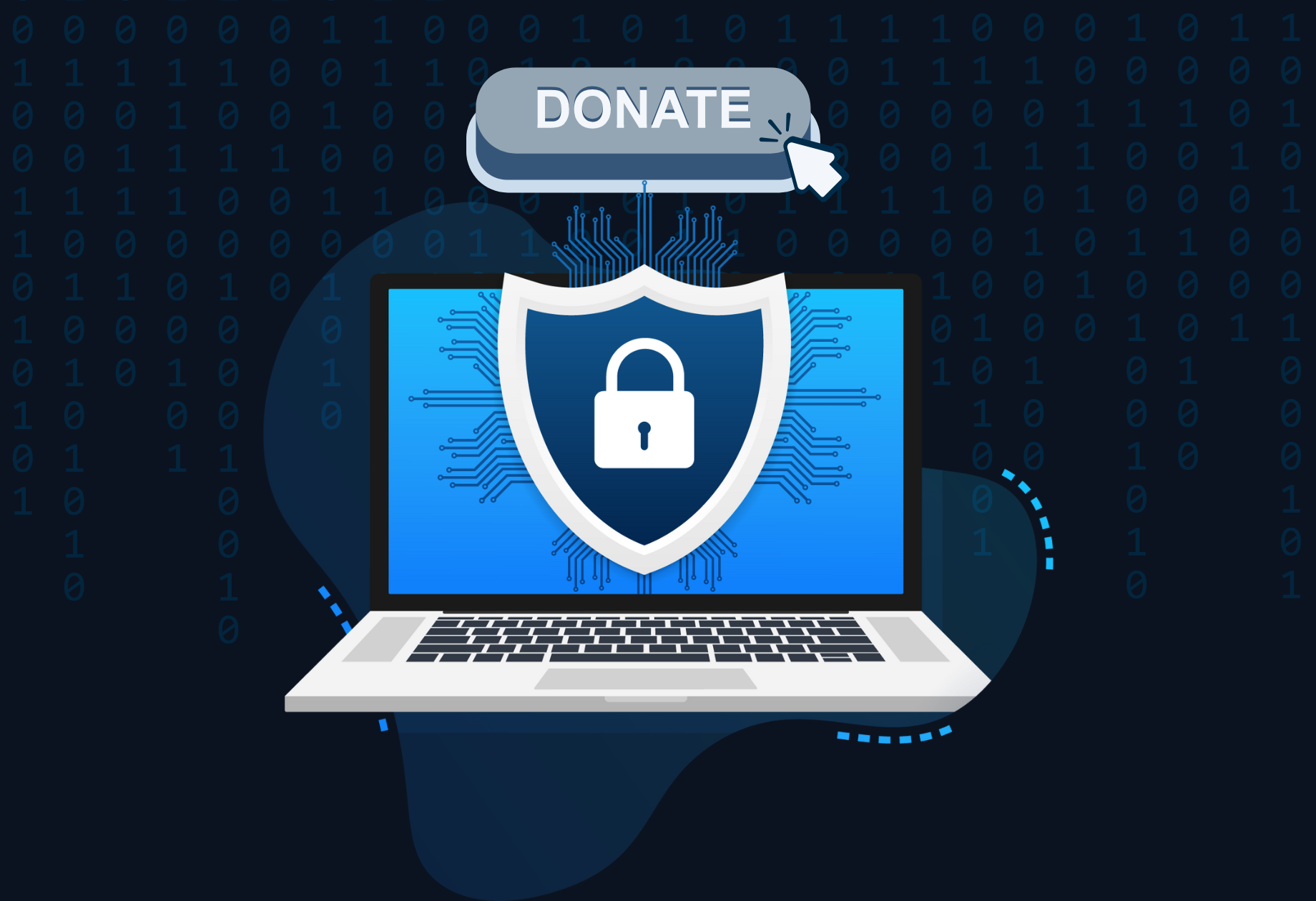In an era where data breaches cost organizations an average of $4.45 million per incident, nonprofits and faith-based institutions face heightened risks due to their reliance on donor trust and sensitive financial data. As cyberthreats evolve and privacy laws tighten, safeguarding donor information is no longer optional—it’s a strategic imperative. For nonprofit administrators and leaders, implementing advanced data protection strategies ensures compliance, preserves reputation, and secures the foundation of community support.
The Critical Role of Donor Data Security
Nonprofits collect vast amounts of sensitive donor data, including names, contact details, payment information, and giving histories. A single breach can lead to financial fraud, legal penalties, and irreversible reputational damage. For example, the 2022 International Committee of the Red Cross breach exposed the data of 515,000 vulnerable individuals through a third-party vendor, underscoring the cascading risks of poor security practices.
Beyond financial loss, nonprofits face ethical obligations to protect constituents. Donors expect their information to be handled with the same rigor as healthcare or banking data. Failure to meet these expectations jeopardizes fundraising efforts and organizational credibility.
Encryption: Building a Fortified Foundation
Data at Rest vs. Data in Motion
Encryption transforms readable data into coded text, requiring a decryption key for access. For nonprofits, two primary types matter:
- Data at rest: Encrypting stored databases, backups, and CRM systems using standards like AES-256, which remains unbroken despite quantum computing advances.
- Data in motion: Securing data during transmission via SSL/TLS protocols for websites and SFTP for file transfers.
For example, encrypting donation forms with TLS 1.3 ensures that credit card details remain unreadable even if intercepted. Temple Management Consulting recommends AES-256 for databases storing donor records, as it aligns with NIST guidelines and satisfies the requirements of HIPAA and FISMA.
Implementing End-to-End Encryption (E2EE)
E2EE ensures only the sender and recipient can decrypt messages, preventing third-party access. Platforms like Signal use E2EE for secure communications, but nonprofits can apply similar principles to donor portals and email systems. For instance, encrypting donation confirmation emails protects against phishing attacks targeting donor payment data.
Secure CRM Practices: Beyond Basic Access Controls
Selecting a Compliance-Focused CRM
Not all donor management systems are equal. Key features to prioritize include:
- SOC 2 Type II certification: Indicates rigorous third-party audits of security controls.
- Role-based access (RBAC): Restricts data access to staff based on job functions (e.g., limiting financial data to accounting teams).
- Audit trails: Logs all user activity, helping detect unauthorized access attempts.
Tools like Bloomerang and DonorPerfect offer built-in encryption and role-based access control (RBAC), but nonprofits must still carefully configure permissions. For example, volunteers should only access event attendance records, not payment histories.
Regular Data Audits and Staff Training
Forty percent of nonprofits report outdated or duplicate records in their CRMs, which increases breach risks. Quarterly audits help:
- Identify redundant data fields (e.g., collecting birthdates without justification).
- Remove inactive donor accounts.
- Update security patches and integrations.
Pair audits with bi-annual staff training on phishing recognition and secure data entry. The 2024 Anthem breach, which came from a single phishing email, highlights the human factor’s role in cybersecurity.
Payment Processing: Balancing Convenience and Security
PCI DSS Compliance Essentials
The Payment Card Industry Data Security Standard (PCI DSS) mandates:
- Using PCI-certified processors like Stripe or PayPal.
- Tokenizing card data to replace sensitive numbers with random characters.
- Implementing multi-factor authentication (MFA) for admin accounts.
Nonprofits processing over 6,000 transactions annually require a formal PCI audit; however, even smaller organizations should adopt Level 4 compliance measures, such as encrypting donation pages and avoiding the storage of card data..
Detecting and Preventing Fraud
- Address Verification System (AVS): Cross-references billing addresses to identify and flag potential mismatches.
- Machine learning tools: Platforms such as Stripe Radar employ transaction pattern analysis to facilitate the real-time prevention of fraudulent donations.
For in-person events, mobile card readers with EMV chips reduce the risk of skimming compared to traditional magstripe devices.
Navigating 2025 Privacy Laws: Delaware and Oregon
Delaware Personal Data Privacy Act (DPDPA)
Effective January 1, 2025, DPDPA applies to nonprofits meeting either:
- 35,000+ Delaware residents’ data processed annually.
- 10,000+ residents’ data processed + 20% revenue from data sales.
Key requirements:
- Allow donors to opt out of targeted advertising/data sales.
- Provide free data access/correction/deletion within 45 days.
- Conduct annual Privacy Impact Assessments (PIAs).
Oregon Consumer Privacy Act (OCPA)
Enforcement for nonprofits begins July 1, 2025, targeting organizations that:
- Process 100,000+ Oregon residents’ data.
- Process 25,000+ residents’ data + derive 25 %+ revenue from data sales.
OCPA mandates clear privacy notices and a streamlined process for handling data subject requests. Nonprofits must also designate a data protection officer if they are processing sensitive data on a large scale.
Data Minimization and Retention Policies
Collecting Only What’s Necessary
The principle of data minimization—collecting only essential information—reduces breach risks and simplifies compliance. For example:
- Remove optional fields (e.g., gender or occupation) from donation forms unless mission-critical.
- Use anonymized analytics to track campaign performance without storing personal identifiers.
Structured Retention Schedules
A documented retention policy should specify:
- Financial records: 7 years (IRS requirement).
- Donor communications: 3 years, unless related to ongoing pledges.
- Volunteer background checks: 5 years post-service.
Secure deletion methods include shredding physical documents and using digital tools like Blancco for irreversible data erasure.
Actionable Steps for Nonprofit Leaders
- Conduct a Data Inventory: Map all stored data, access points, and third-party vendors.
- Update Privacy Policies: Disclose data practices in accordance with DPDPA/OCPA requirements.
- Encrypt Legacy Systems: Retrofit older databases with AES-256 encryption.
- Train Staff Quarterly: Use modules from CISA’s Cybersecurity Awareness Program.
Partner with Experts: Engage firms like Temple Management Consulting for audits.
Conclusion: Building Trust Through Proactive Protection
Donor data security is a continuous journey, not a one-time project. By adopting encryption, securing CRMs, complying with evolving laws, and practicing data minimization, nonprofits can transform risk management into a trust-building asset.
Temple Management Consulting specializes in helping nonprofit organizations manage their finances securely and effectively.
Let your organization’s commitment to data stewardship be the reason donors choose to support your mission for decades to come.



